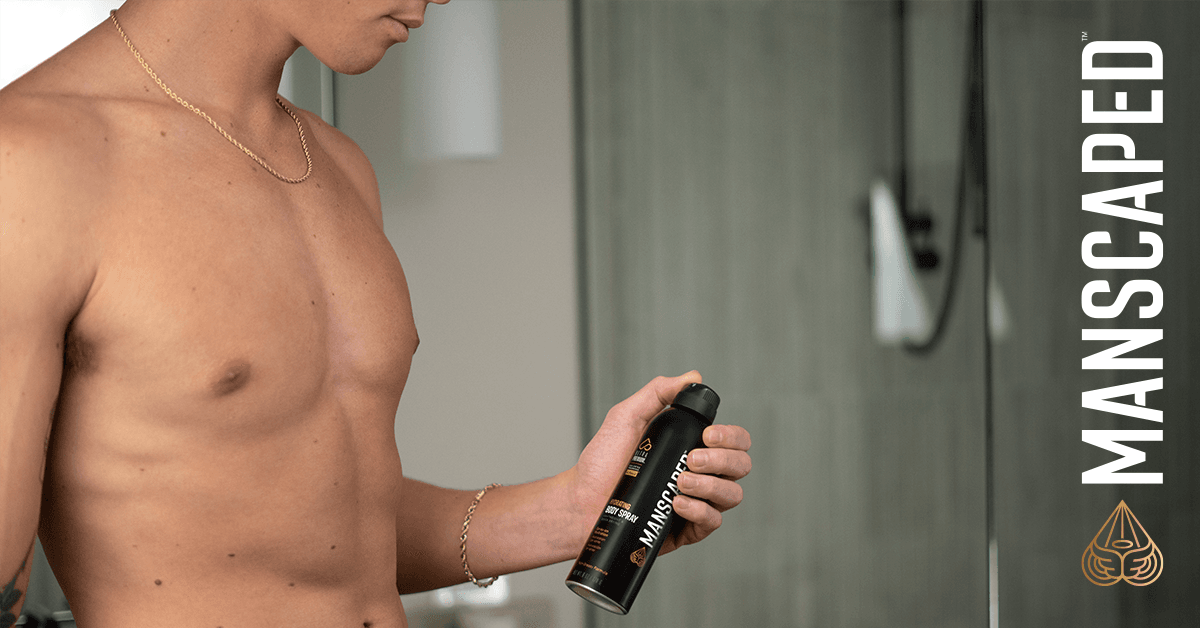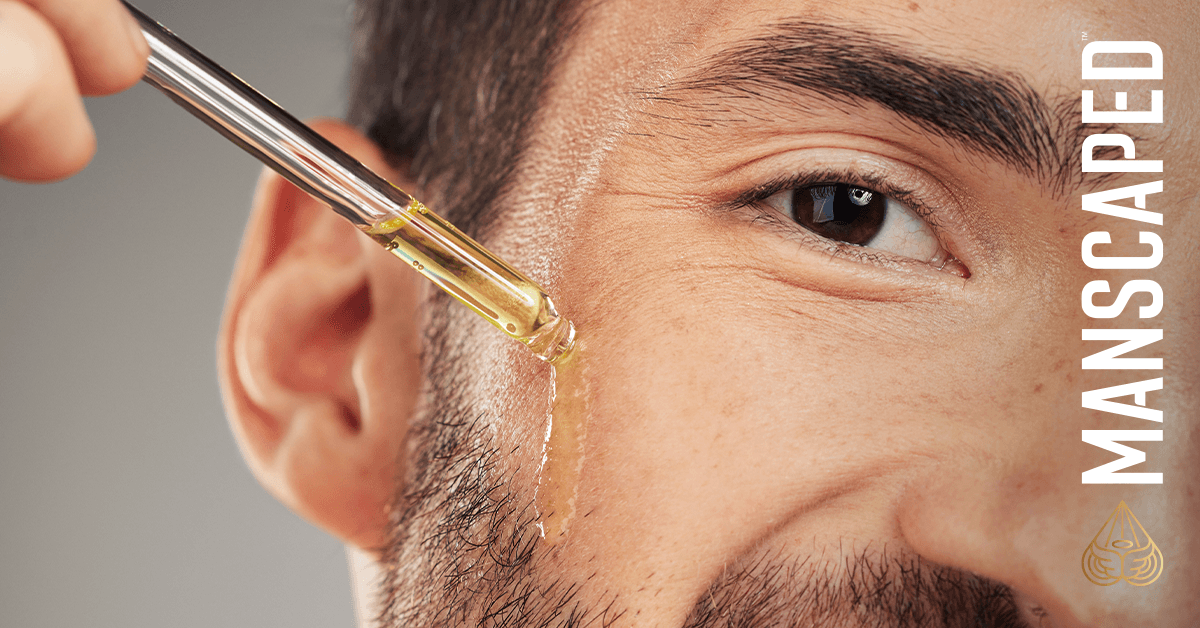
So you have a hickey.
Good for you! Hickeys can be the result of a good time, and we’re hoping that’s your case.
Regardless, if you have to deal with a hickey, then there are some things you want to know. What is really going on with your skin? How can you get rid of it?
These questions come up for everyone, and your good friends at MANSCAPED™ are once again here with the answers you need.
What actually is a hickey?
Everybody knows what a love bite is. That’s not what we mean by asking this question.
Instead, from a medical or physiological perspective, what is a hickey?
It’s actually pretty simple. It’s a bruise, and usually a minor one at that. There’s no special Latin name that you need to learn—no hidden mysteries. A hickey is a bruise in your skin that happens when intimate time gets a little intense (and we didn’t say too intense because that’s really up to you).
To be really specific, a hickey is a bruise that is in the living layer of skin tissue. Hickeys usually aren’t very deep, which is why they often don’t hurt, but they are still the result of direct trauma. Trauma can cause blood vessels to rupture. When that happens, blood leaks into the skin, and that causes bruising. If the bruise is expansive enough, it can come with swelling and soreness, but that’s uncommon for most hickeys.
How long do they last?
Considering that a hickey is a light bruise, it won’t last longer than any other bruises. The specific amount of time really depends on you and your body, along with the intensity of the hickey.
On average, bruises take 3 to 14 days to heal, but the 14-day monsters tend to be rather intense (like a monster black eye). Hickeys usually heal in seven days or less.
In fact, you can more or less guess how long a bruise will last by how sore it is. The soreness correlates with the extent of the damage, and more damage takes longer to heal.
But, if you’re someone whose bruises last longer than normal, that will apply to your hickeys, too.

How do you get rid of them?
Before we get into this, it’s important to understand that there are no magic cures. We don’t have a special formula that you can rub on your hickey to get rid of it right away. If we did, you can trust that it would be on the front page of our website.
Unfortunately, the only real way to get rid of a hickey is for your body to heal. This takes time.
Fortunately, there are a few things that can push your heal time closer to 3 days as opposed to 14. If that’s still not fast enough, then maybe it’s time to break out a turtleneck.
Warm compress
This is easy and one of the best things you can do.
A quick side note: a lot of resources will tell you to start with a cold compress. The idea is that the cold temperature will help reduce bleeding and therefore reduce the bruise’s development. That’s true in the case of something like a black eye, but it usually won’t help with a hickey.
First off, do you want to pause special playtime to go get a cold compress? If not, you’re missing the window of opportunity for cold treatment to work. Once the internal bleeding stops, the cold compress loses its power.
Second, hickeys are rarely severe enough that a cold compress can do anything. By the time you even see it, the bleeding probably stopped, and there’s no need.
That said, if the formation of the hickey is intense enough that it does make you want to interrupt special fun time, then you should definitely consider a cold compress. And, possibly, a trip to urgent care.
Otherwise, skip the cold compress and go straight to the warm compress. Heat exposure helps the tissue to relax. It also dilates the blood and lymphatic vessels in the area. These are the parts of your body that carry the things you need for healing to the area and the things causing inflammation away from the area. So, warmth is your friend.
To make a warm compress, use hot water. It should be warmer than a typical shower, but it shouldn’t be anywhere near boiling. The water should feel very warm but not sting or hurt from being too hot.
Put that warm water on a cloth or towel, and apply it to the hickey until it comes back down to room temperature. Soak the cloth in warm water again and keep repeating for a good 15 to 20 minutes. Do that, and you’ll find that your hickey heals a lot faster than normal.
Arnica
Arnica? Yes. For those who don’t know, arnica is an herb. You can find it in a number of foods, but for hickeys, you don’t need to worry about eating the stuff. In fact, never try to eat straight arnica. It’s very dangerous when it isn’t professionally mixed by experts.
Instead, you can look for an arnica gel at your nearest drugstore. It’s often used for osteoarthritis, so that might help you find the right section.
Apply the gel to your hickey according to the instructions, and it can speed up your healing process.
Vitamin C
Vitamin C can also help. If you maintain healthy levels of vitamin C in your everyday diet, it can help with blood clotting, and it will probably reduce the severity of your hickey in the first place.
After a hickey forms, you don’t need to pop vitamin C pills or chug orange juice. Instead, look for a topical vitamin C application (again at the drugstore). It can help reduce swelling and inflammation and assist with the healing process in general.

Vitamin K
Vitamin K is another naturally occurring treatment that can help. Like with vitamin C, get your K treatment in the form of a topical application. Some gels might even have both vitamins K and C. That would make your life a lot easier.
Regardless, apply vitamin K like you would vitamin C or arnica — exactly as the instructions tell you to.
Like vitamin C, vitamin K can lower inflammation. Additionally, it can help fade the bruise color, which makes it go away a lot faster in appearance, which is really the point here.
Lasers
Yep. You can laser off a hickey. If that isn’t one of the coolest aspects of modern science, we don’t know what is.
Laser treatments are potentially risky, so leave them in the hands of a professional dermatologist. If someone without those credentials says they can laser away your hickey, you’re gambling. They might succeed, but if they mess up, they could leave you with a permanent scar. That’s worse, right?
Overall, laser treatments are a rather expensive and extreme way to deal with a hickey, so this is only for when you have to give an address to the entire UN or something. But, when you do want to go this route, there are limits. Laser hickey removal has to be done within 24 to 48 hours of the hickey appearing. Remember that the hickey probably appeared at some point last night, when you weren't looking. Take that into your calculations.
If you do get the treatment early enough, it usually works.
Should you get rid of hickeys?
This is actually an interesting question. Are you trying to hide who you are or what you do in your spare time? Are you ashamed?
We’re not actually in the business of telling people how they feel about things. If you feel embarrassed, then go ahead and hide that thing and get it healed. If you’re shameless, you can flaunt a hickey. We don’t care.
There is one thing to remember, though. A hickey is a visual sign of actual trauma to your body. Whether or not you feel the need to cover it, healing your flesh wound is probably the overall healthier choice. Hickeys aren’t likely to scar, but all other things being equal, we advocate for healthier skin when we can.
11.07.22
Share

Featured Articles
- Your Favorite Ball Deodorant. Now with a New Scent: Perservere.MANSCAPED® + TCS for Testicular Cancer Awareness MonthIntroducing The Lawn Mower® 5.0 Ultra TCS Special Edition and TCS Ball Hero BundleThe Dome Shaver™ Pro vs. The Dome Shaver™ Plus: Which Should You Choose?The Chairman™ Pro vs. The Chairman™ Plus: Which Should You Choose?



